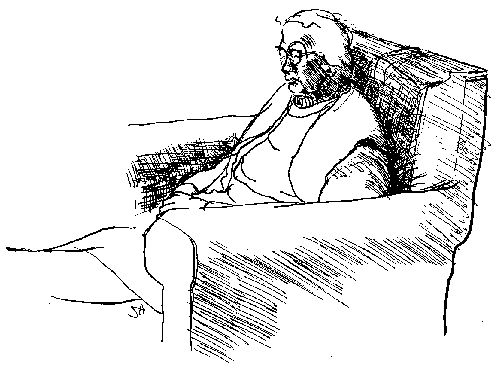

Setting some time apart every day for withdrawal in silence is a practical and necessary step towards becoming a spiritual person. However, not only the time element is essential; choosing the right place is equally important.
We may rightly consider our life as a journey. We are travelling all the time, but, humanly speaking, our point of departure and our destination are not so clear. It is as if the road behind us and the way ahead are shrouded in deep fog. Who am I? Where do I come from? What is the purpose of my journey? Am I, perhaps, losing my way?
It is obvious that in such a human condition we cannot afford simply to walk on blindly. We have to take our bearings. We express this symbolically, but very meaningfully, by choosing a convenient place and a posture of 'rest' for our inner prayer.
In one way the place of prayer is not important. We can withdraw into ourselves and pray almost anywhere. But experience shows that it helps our inner prayer if we select the right place for it. Some places are naturally more conducive to recollection and concentration. Is it not for this reason that people are asked to keep silent in public libraries?

Choose a place with the least possible background noise. Avoid a place where external noise is bound to drown your inner attention.
Perhaps, this is so straight-forward that there is no need to work this out in examples.
It makes good sense to select a place where we can find a measure of physical silence.Choose a peaceful place, a place you like, a spot which allows you to feel free and relaxed, where you can be alone, where you can quietly enjoy just being there.
We read in the Gospels that Jesus Christ began his public ministry by withdrawing to the desert for forty days (Luke 4,1-2). Moreover, throughout his life he was accustomed to pray in lonely places, where he could be alone.
Whenever Jesus had been busy during the day, he would make time for prayer during the night. "Large crowds would gather to hear him and to have their sicknesses cured. But afterwards he would go off to some place where he could be alone and pray". "Jesus went up into the hills to pray. He spent the whole night in prayer to God" (see Luke 5,15-16; 6,12).
On one occasion Jesus sent his disciples across the lake in a boat. "Dispersing the crowd, he went into the hills by himself to pray. When evening came, he was there alone" (Matthew 15,23).
Jesus needed such moments alone, away from the crowd, face to face with God, his Father, in silence.
It is interesting to observe that in practically all religious traditions specific buildings have been set aside for worship and prayer. Think of churches, temples, synagogues, mosques, gurudwaras and so on. These are built in such a way as to inspire recollection in us by their design and decoration. If we like the mood of such a house of prayer, we may well feel drawn to find our moment of silence there.
However, few of us live next door to a church. Fewer still may find their local church well-suited for their personal daily prayer. So why not create our own 'sacred haunt'? In the past dukes and barons had 'private chapels' built into their castles and mansions. And ladies of high rank had a 'refuge' in their garden where they could withdraw and be on their own. Why not follow the same idea by designating some specific place in our home or its surroundings for our moment of silence?
We could choose a cosy corner of our own, a bench in the back garden, a favourite armchair near the fire, the top of our bed in our own bedroom.
It is not essential to select the same place each time. But if we do, it will help us enter into our 'inner space' more easily. The mind associates locations with activities. Our physical withdrawal to our own 'hallowed place' will help the mind withdraw to its act of inner focus.
 The
posture we adopt can also help us. However, we should not choose a posture
for its own sake. The determining factor should be whether the posture
helps us concentrate in a free and relaxed manner.
The
posture we adopt can also help us. However, we should not choose a posture
for its own sake. The determining factor should be whether the posture
helps us concentrate in a free and relaxed manner.
One traditional Christian posture has been genuflection on both knees, with hands folded and eyes closed. Pews in churches were designed to facilitate this posture. Sometimes people pray like this at home, kneeling on both knees, their folded hands resting on a table or on the side of a bed. If we are used to this and find it natural, fine. Otherwise, choose a more congenial posture.
Hindus in India and Zen Buddhists in Japan are accustomed to pray sitting on the floor, crosslegged.The practice can be helpful if we do not adhere to its requirements too rigidly. For most of us the posture may be so unusual that accommodating it may distract us from the content of our prayer.
Other postures could be: sitting in a chair or on a bench, walking around in a place where you will not be much distracted, lying on your back with your eyes closed - though if this puts you to sleep, it is no use!
Text from: JOHN WIJNGAARDS, Stepping into the Seven Circles of Prayer, London 1993.
.
.
.